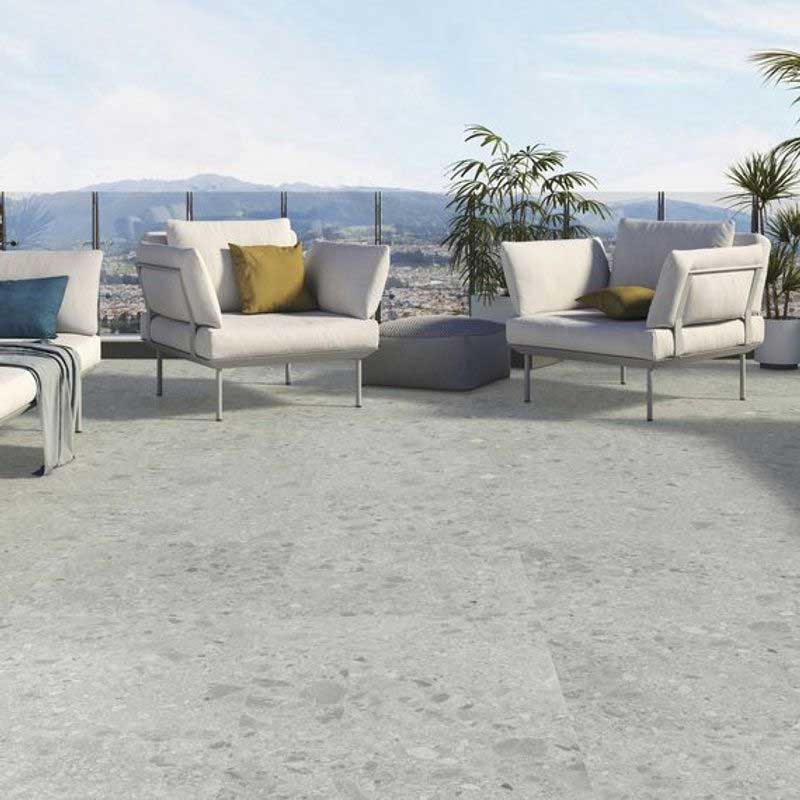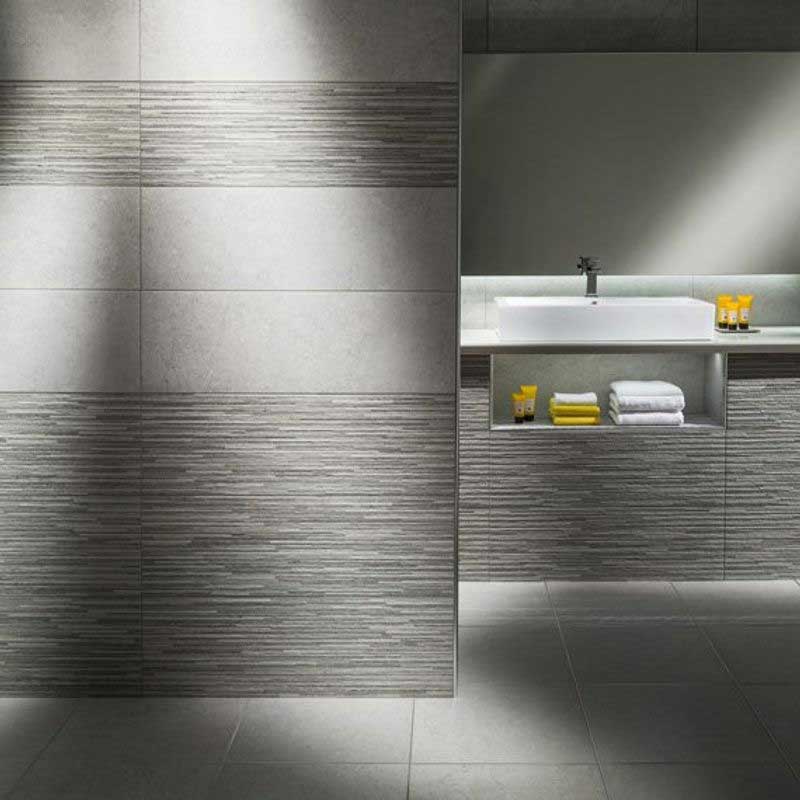Slips, trips and falls are the last things you want as commonplace in your home. Especially after fitting new tiles.
So how do you know what tiles are the best for your rooms to reduce the risk?
At Tile Superstore, we’ve created a table to show you the various tile R rating options and explain why the information included in it matters in the long term.
Table of contents
- What is an ‘R’ Rating
- Which floor tiles are best for my room?
- What to look out for with a tile’s ‘R’ Rating
What is a tile R rating?
The ‘R’ Rating is a ranking given to floor tiles to show their slip resistance. The ‘R’ means Ramp Test. The scale of the ‘R’ Rating ranges from R9 to R13. R9 has the least slip resistance and R13 has the highest slip resistance.
Slip-resistant tiles are specifically designed to reduce the risk of slipping and falling, particularly in areas prone to moisture, such as bathrooms, kitchens, swimming pool decks or outdoor areas.
These tiles have a textured surface that enhances traction, providing better grip and stability for your feet, even when the floor is wet or slippery. By using slip-resistant tiles, you can help prevent accidents and create a safer environment for yourself and your family.
What is a ‘Ramp Test’?
The ‘Ramp Test’ is a specific process to examine the slip resistance of a flooring type. Typically, this means fixing said floor type, in this case, tiles, to a ramp before covering them in oil.
The ramp is raised as a human subject walks back and forth in small steps across the floor (usually with a safety harness to avoid injury) until they slip on the surface. The angle then helps determine the ‘R’ Rating.
The testing is in accordance with DIN 51130:2004 (you can find out more about this via the HSE (Health and Safety Executive) government site. This is a rating recognised and adopted throughout the UK.
To quote:
“Testing of floor coverings; determination of the anti-slip properties; workrooms and fields of activities with slip danger; walking method; ramp test German National Standard 2004”

What is a good ‘Ramp Test’ score?
R13 is your high-value score for a floor type. Especially when used on areas with slopes or high wear areas. So be on the lookout for this whenever you’re looking for new flooring. Having said this, the minimum recommended ‘R’ Rating is R12 if you don’t have major slopes or high floor wear areas on the property.
| Rating No.* | PTV (Pendulum Test Value) on horizontal surface** | PTV at a 5° slope*** | Slip characteristics**** |
| R 9 (the lowest value) | 11 to 18 PTV | 2 to 9 PTV | VERY POOR Slip injuries certain to occur |
| R 10 | 18 to 34 PTV | 9 to 25 PTV | POOR Slip injuries likely to occur |
| R 11 | 34 to 51 PTV | 25 to 42 PTV | BETTER But can still fail Pendulum Tests |
| R 12 | 51 to 70 PTV | 42 to 61 PTV | GOOD Minimum recommended |
| R 13 | 70+ PTV | 61+ PTV | BEST Especially on slopes and high floor wear areas |
| *For floors shoes are normally worn. **PTV also known as SRV (Slip Resistant Value). *** adjust down PTV by 1.76 for every slope degree. **** No slope | |||

Which floor tiles are best for my room?
Anti-slip floor tiles are usable in most areas, but sometimes there is a less likely risk of slipping. There is no harm in being safe than sorry, but if you want to know which floor tiles are anti-slip, here’s a guide to help you know more.
| Rating No. | Suitable for... |
| R 9 (the lowest value) | • Most domestic internal use. • If used in a bathroom, a towel or mat should be used to dry feet on. |
| R 10 | • Living areas • Kitchens • Hallways • If used in a bathroom, a towel or mat should be used to dry feet on. |
| R 11 | • Domestic use • Office entrances • Lavatories • Commercial areas (e.g., small factories) |
| R 12 | • Larger commercial areas that may have contaminates, • External patios if using porcelain tiles. |
| R 13 | • Around swimming pools • Areas where there may be constant wetness. • Slopes • Commercial areas that may be contaminated with oils etc. |

What to look out for with a tiles ‘R’ Rating
Sometimes you’ll need to go the extra mile for your flooring. Especially if you work in a commercial space, office setting, industrial area or similar.
So, here’s what to look out for to get the most out of your flooring:
Confirm the flooring’s ‘R’ Rating with a floor sample test
As flooring is typically batch created, this can sometimes affect the PTV for the ‘R’ Rating across the batch. So, what’s written on the packaging or leaflet might not be what you get. If you’re concerned about the ‘R’ Rating’s accuracy, you can have a sample test of the flooring.
Make sure to have a Pendulum test for your floor ASAP
It’s no good if your flooring is finished. So, you know your floor will perform as intended, perform the Pendulum test as soon as the floor is being laid. That way you won’t have to worry about tearing up the whole floor if you find it’s not performing as intended.
Make sure flooring for slopes has a higher PTV
For every one slope, increase the value of the PTV by two to ensure performance is as desired.
Different flooring materials will wear out more than others
Materials like vinyl will wear away quickly, in some cases just months after being laid. So, make sure you have a higher ‘R’ Rating. Especially in areas where there are likely to be high numbers of people walking through the area at any given time.
If you’ve made to the end of our tile R rating guide, take a look at our vast range of products for unique flooring solutions. If you need additional help with your purchase, you can contact our friendly customer service team for support.














